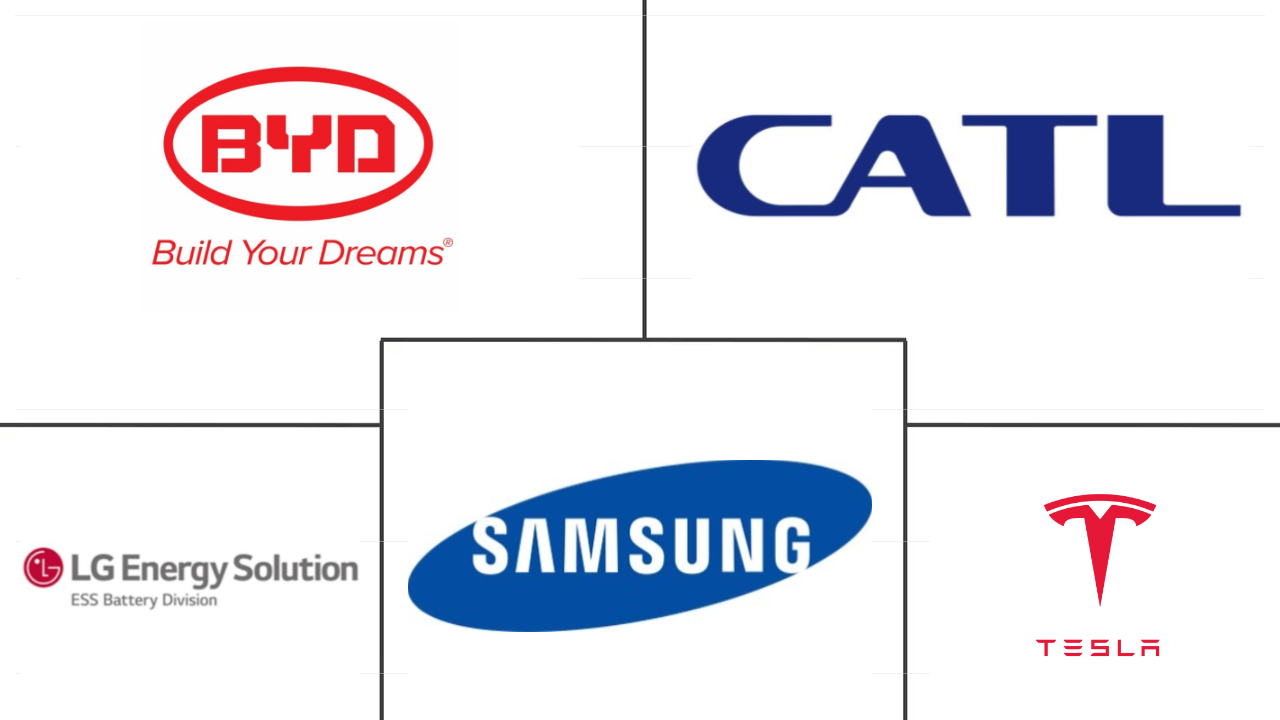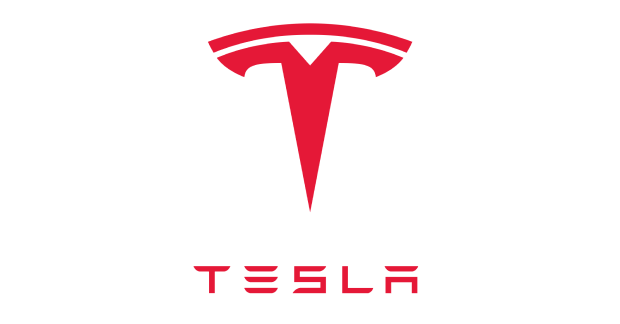Market Size of us electric commercial vehicle battery pack Industry
| Icons | Lable | Value |
|---|---|---|
|
|
Study Period | 2017 - 2029 |
|
|
Market Size (2024) | USD 6.93 Billion |
|
|
Market Size (2029) | USD 15.98 Billion |
|
|
Largest Share by Propulsion Type | BEV |
|
|
CAGR (2024 - 2029) | 18.18 % |
|
|
Fastest Growing by Propulsion Type | PHEV |
|
|
Market Concentration | High |
Major Players |
||

|
||
|
*Disclaimer: Major Players sorted in no particular order |
US Electric Commercial Vehicle Battery Pack Market Analysis
The US Electric Commercial Vehicle Battery Pack Market size is estimated at 6.93 billion USD in 2024, and is expected to reach 15.98 billion USD by 2029, growing at a CAGR of 18.18% during the forecast period (2024-2029).
6.93 Billion
Market Size in 2024 (USD)
15.98 Billion
Market Size in 2029 (USD)
66.67 %
CAGR (2017-2023)
18.18 %
CAGR (2024-2029)
Largest Segment by Body Type
98.84 %
value share, LCV, 2023
The largest segment in the US ECV battery pack market is LCVs with increasing demand for last-mile delivery and e-commerce companies.
Largest Segment by Propulsion Type
100 %
value share, BEV, 2023
BEV holds a large majority of the US market for ECV battery packs with zero-emission status, lower running costs & government rules that support transportation options.
Largest Segment by Battery Chemistry
58.81 %
value share, NMC, 2023
NMC batteries dominate the market because of their high safety, long cycle life, and low cost in United States Electric Commercial Vehicle Battery Pack Market.
Largest Segment by Battery Form
60.66 %
value share, Cylindrical, 2023
Cylindrical batteries dominate the US ECV battery pack market due to their compact design, efficient space utilization, and enhanced performance and reliability.
Leading Market Player
40 %
market share, Tesla Inc., 2022

Tesla has strong track record of developing and manufacturing high-quality battery cells and has partnered with major automakers including Tesla, BMW & Volkswagen.
The growing popularity of light electric commercial vehicles in the United States boosting the demand for battery packs
- The adoption of electric commercial vehicles (ECVs) and their battery packs in the United States has been on a steady rise from 2017 to 2029. The increasing size and capacity of batteries have also remained key drivers behind this trend. Battery technology has made significant strides, resulting in more energy-dense packs with extended ranges. Moreover, declining battery costs have made ECVs more attractive and affordable for corporate fleet managers.
- Government subsidies are playing a pivotal role in shaping the future of electric commercial vehicles in the United States. Major players like Amazon and UPS have unveiled plans to transition their delivery fleets to electric vehicles between the years 2024 and 2029. This move is expected to create a surge in demand for electric commercial vehicle battery packs. As concerns over greenhouse gas emissions grow, both businesses and consumers across the United States are increasingly prioritizing sustainable transportation options.
- Electric buses are gaining traction, particularly in US cities with robust environmental policies. For instance, the Los Angeles Metro has set a target to fully transition to electric buses by 2030. Advancements in battery technology are poised to yield lighter and more efficient battery packs, potentially extending the range of electric commercial vehicles across the US market. Coupled with the declining battery costs and the expanding charging infrastructure, the popularity of electric commercial vehicles is projected to soar in the coming years nationwide.
US Electric Commercial Vehicle Battery Pack Industry Segmentation
Bus, LCV, M&HDT are covered as segments by Body Type. BEV, PHEV are covered as segments by Propulsion Type. LFP, NCA, NCM, NMC, Others are covered as segments by Battery Chemistry. 15 kWh to 40 kWh, 40 kWh to 80 kWh, Above 80 kWh, Less than 15 kWh are covered as segments by Capacity. Cylindrical, Pouch, Prismatic are covered as segments by Battery Form. Laser, Wire are covered as segments by Method. Anode, Cathode, Electrolyte, Separator are covered as segments by Component. Cobalt, Lithium, Manganese, Natural Graphite, Nickel are covered as segments by Material Type.
- The adoption of electric commercial vehicles (ECVs) and their battery packs in the United States has been on a steady rise from 2017 to 2029. The increasing size and capacity of batteries have also remained key drivers behind this trend. Battery technology has made significant strides, resulting in more energy-dense packs with extended ranges. Moreover, declining battery costs have made ECVs more attractive and affordable for corporate fleet managers.
- Government subsidies are playing a pivotal role in shaping the future of electric commercial vehicles in the United States. Major players like Amazon and UPS have unveiled plans to transition their delivery fleets to electric vehicles between the years 2024 and 2029. This move is expected to create a surge in demand for electric commercial vehicle battery packs. As concerns over greenhouse gas emissions grow, both businesses and consumers across the United States are increasingly prioritizing sustainable transportation options.
- Electric buses are gaining traction, particularly in US cities with robust environmental policies. For instance, the Los Angeles Metro has set a target to fully transition to electric buses by 2030. Advancements in battery technology are poised to yield lighter and more efficient battery packs, potentially extending the range of electric commercial vehicles across the US market. Coupled with the declining battery costs and the expanding charging infrastructure, the popularity of electric commercial vehicles is projected to soar in the coming years nationwide.
| Body Type | |
| Bus | |
| LCV | |
| M&HDT |
| Propulsion Type | |
| BEV | |
| PHEV |
| Battery Chemistry | |
| LFP | |
| NCA | |
| NCM | |
| NMC | |
| Others |
| Capacity | |
| 15 kWh to 40 kWh | |
| 40 kWh to 80 kWh | |
| Above 80 kWh | |
| Less than 15 kWh |
| Battery Form | |
| Cylindrical | |
| Pouch | |
| Prismatic |
| Method | |
| Laser | |
| Wire |
| Component | |
| Anode | |
| Cathode | |
| Electrolyte | |
| Separator |
| Material Type | |
| Cobalt | |
| Lithium | |
| Manganese | |
| Natural Graphite | |
| Nickel | |
| Other Materials |
US Electric Commercial Vehicle Battery Pack Market Size Summary
The US Electric Commercial Vehicle Battery Pack Market is experiencing a robust expansion, driven by the increasing adoption of electric commercial vehicles (ECVs) and advancements in battery technology. The market is characterized by significant growth in battery size and capacity, which have been pivotal in enhancing the appeal of ECVs. The decline in battery costs has further contributed to the attractiveness of these vehicles for corporate fleet managers. Government subsidies are instrumental in promoting the transition to electric vehicles, with major companies like Amazon and UPS planning to electrify their delivery fleets. This shift is expected to significantly boost the demand for electric commercial vehicle battery packs. Additionally, the growing emphasis on sustainable transportation options, fueled by concerns over greenhouse gas emissions, is encouraging both businesses and consumers to prioritize ECVs. The popularity of electric buses is also on the rise, particularly in cities with strong environmental policies, such as Los Angeles, which aims to fully transition to electric buses by 2030.
The market landscape is highly consolidated, with a few major players dominating the scene. Companies like Tesla, Toyota Group, Ford Group, Hyundai, and Honda hold substantial market shares, with Tesla leading the charge in electric vehicle sales. These companies benefit from strong customer bases, innovative technologies, and strategic partnerships, particularly in battery manufacturing. The US market is also witnessing a steady increase in demand for electric SUVs, driven by changing consumer preferences towards more spacious and adventurous vehicles. International brands are also making their mark, with vehicles like the Toyota RAV4 plug-in hybrid and the Sienna gaining popularity. The market's consolidation is evident, with top companies like BYD, CATL, LG Energy Solution, Samsung SDI, and Tesla accounting for a significant portion of the market. Recent developments, such as LG Energy Solution's investments and partnerships, highlight ongoing efforts to strengthen the supply chain and production capabilities for electric vehicle batteries in North America.
US Electric Commercial Vehicle Battery Pack Market Size - Table of Contents
-
1. MARKET SEGMENTATION (includes market size in Value in USD and Volume, Forecasts up to 2029 and analysis of growth prospects)
-
1.1 Body Type
-
1.1.1 Bus
-
1.1.2 LCV
-
1.1.3 M&HDT
-
-
1.2 Propulsion Type
-
1.2.1 BEV
-
1.2.2 PHEV
-
-
1.3 Battery Chemistry
-
1.3.1 LFP
-
1.3.2 NCA
-
1.3.3 NCM
-
1.3.4 NMC
-
1.3.5 Others
-
-
1.4 Capacity
-
1.4.1 15 kWh to 40 kWh
-
1.4.2 40 kWh to 80 kWh
-
1.4.3 Above 80 kWh
-
1.4.4 Less than 15 kWh
-
-
1.5 Battery Form
-
1.5.1 Cylindrical
-
1.5.2 Pouch
-
1.5.3 Prismatic
-
-
1.6 Method
-
1.6.1 Laser
-
1.6.2 Wire
-
-
1.7 Component
-
1.7.1 Anode
-
1.7.2 Cathode
-
1.7.3 Electrolyte
-
1.7.4 Separator
-
-
1.8 Material Type
-
1.8.1 Cobalt
-
1.8.2 Lithium
-
1.8.3 Manganese
-
1.8.4 Natural Graphite
-
1.8.5 Nickel
-
1.8.6 Other Materials
-
-
US Electric Commercial Vehicle Battery Pack Market Size FAQs
How big is the US Electric Commercial Vehicle Battery Pack Market?
The US Electric Commercial Vehicle Battery Pack Market size is expected to reach USD 6.93 billion in 2024 and grow at a CAGR of 18.18% to reach USD 15.98 billion by 2029.
What is the current US Electric Commercial Vehicle Battery Pack Market size?
In 2024, the US Electric Commercial Vehicle Battery Pack Market size is expected to reach USD 6.93 billion.

